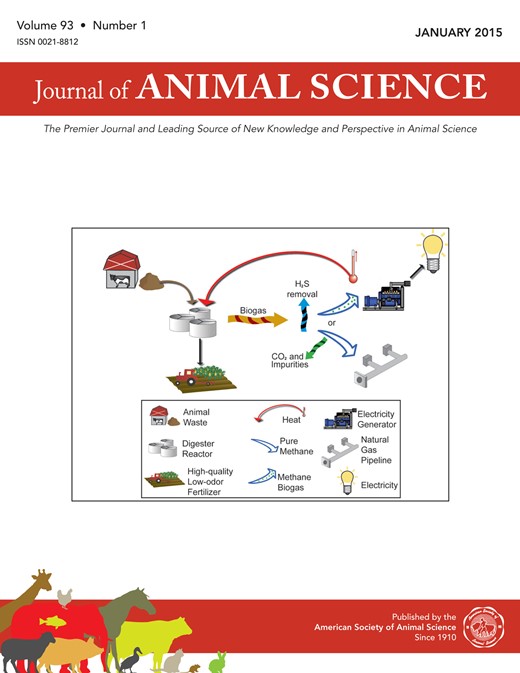-
Views
-
Cite
Cite
M. Rira, D. P. Morgavi, H. Archimède, C. Marie-Magdeleine, M. Popova, H. Bousseboua, M. Doreau, Potential of tannin-rich plants for modulating ruminal microbes and ruminal fermentation in sheep, Journal of Animal Science, Volume 93, Issue 1, January 2015, Pages 334–347, https://doi.org/10.2527/jas.2014-7961
Close - Share Icon Share
Abstract
The objective of this work was to study nutritional strategies for decreasing methane production by ruminants fed tropical diets, combining in vitro and in vivo methods. The in vitro approach was used to evaluate the dose effect of condensed tannins (CT) contained in leaves of Gliricidia sepium, Leucaena leucocephala, and Manihot esculenta (39, 75, and 92 g CT/kg DM, respectively) on methane production and ruminal fermentation characteristics. Tannin-rich plants (TRP) were incubated for 24 h alone or mixed with a natural grassland hay based on Dichanthium spp. (control plant), so that proportions of TRP were 0, 0.25, 0.5, 0.75, and 1.0. Methane production, VFA concentration, and fermented OM decreased with increased proportions of TRP. Numerical differences on methane production and VFA concentration among TRP sources may be due to differences in their CT content, with greater effects for L. leucocephala and M. esculenta than for G. sepium. Independently of TRP, the response to increasing doses of CT was linear for methane production but quadratic for VFA concentration. As a result, at moderate tannin dose, methane decreased more than VFA. The in vivo trial was conducted to investigate the effect of TRP on different ruminal microbial populations. To this end, 8 rumen-cannulated sheep from 2 breeds (Texel and Blackbelly) were used in two 4 × 4 Latin square designs. Diets were fed ad libitum and were composed of the same feeds used for the in vitro trial: control plant alone or combined with pellets made from TRP leaves at 44% of the diet DM. Compared to TRP, concentration of Ruminococcus flavefaciens was greater for the control diet and concentration of Ruminococcus albus was least for the control diet. The methanogen population was greater for Texel than for Blackbelly. By contrast, TRP-containing diets did not affect protozoa or Fibrobacter succinogenes numbers. Hence, TRP showed potential for mitigating methane production by ruminants. These findings suggest that TRP fed as pellets could be used to decrease methane production.





